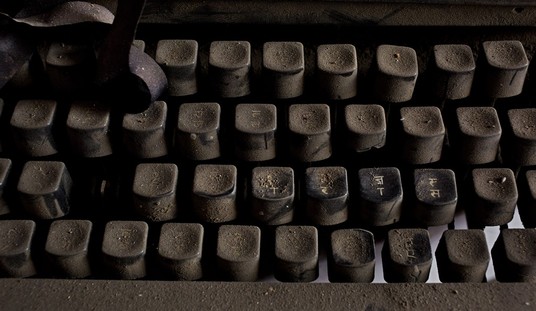The Perfect Repeater
Resolved: The pre-64 Model 12 Winchester is the standard by which all pump shotguns must be judged. Now that that’s established, I’ll proceed to tell you about this magnificent shotgun and how it came to be the gold standard of pump shotguns.
Full disclosure: I’m not impartial. I own three Model 12s – a 1940 12-gauge field gun, a 1941 16-gauge field gun, and a near-mint 1942 12-gauge Black Diamond trap gun. The sequential years are nothing more than a happy coincidence.
John Browning
It should come as no surprise that the DaVinci of firearms was involved in the genesis of the Model 12, as he was with so many American sporting and martial arms. However, his involvement in this case is limited to a precursor of the Model 12.
The story begins in 1887. In that year, Winchester determined to build and sell a repeating shotgun. They turned to John Browning, who had developed the company’s outstanding 1886 lever rifle the year before, along with the Winchester 1885 falling-block single-shot rifle.
Browning had already produced a successful lever-action rifle for Winchester, and while he advocated a pump-action for a shotgun, Winchester’s official position at that time was that they were a lever gun company, and by God, they’d have a lever-action shotgun. Browning came through, producing the 1887 lever gun, the first mass-produced repeating shotgun by a major manufacturer.
But the 1887 lever gun was big and clunky, and its drop-block lever action required a long throw. It was offered in 10 and 12-gauge but was only strong enough for black-powder shells at a time when higher-performance smokeless powder loads were just beginning to become available.
Sales were lackluster. Double guns still handled better than the heavy lever gun and offered much faster second shots and quick reloads. Browning politely reminded Winchester of his stated position on the pump-action for shotguns. Winchester finally agreed that the brilliant designer may have had a point.
The Model 93/97
In response, Browning designed the black-powder-only 1893 pump shotgun, which was quickly refined into the 12- and 16-gauge, smokeless-powder-capable Model 1897. The first variant of the ’97 offered in 1897 was a solid-frame 12-gauge, followed in 1898 by the takedown version in 12-gauge and the takedown 16-gauge in 1900.
Sales of the new gun were brisk, which probably earned Winchester’s management a “told you so” or two from John Browning. In fact, Browning liked the new shotgun enough that he retained one as his personal shotgun, using it on ranges and in the game fields until he died in 1926.
The 1897 had a few interesting features. The under-barrel tubular magazine remains pretty typical for pump guns made today, but the external hammer and lack of an additional safety probably wouldn’t fare well in today’s market – although I would opine, as I have repeatedly, that a gun with an external hammer doesn’t require an additional safety.
Another feature the '97 had was the lack of a trigger disconnect. This device disconnects the trigger when the action is cycled, thus requiring the trigger to be released and pressed again for follow-up shots. The '97, like most pump guns designed in the early 20th century, was a “slam-fire” gun – one could hold the trigger down and cycle the action, firing a new round every time the slide slammed home. This isn’t a terribly accurate way to fire a shotgun, but I will admit it can be great fun; when I was a young fellow, I used to experiment with this technique with my Dad’s old Stevens 520A pump, which had the same capacity. I never learned to hit much that way but burned up a fair amount of shells until the Old Man saw me dumping magazines of cheap field loads into the dirt bank we used as a backstop and, fearing damage to his gun by the rough use, put a stop to my experimenting — and in no uncertain terms.
The ’97 was in production until 1957, a sixty-year run. During both World Wars, the U.S. Army and Marine Corps used Model '97s to good effect in combat, the old guns with their slam-fire ability, six-shot magazines, 18” barrels, heat shrouds, and bayonet lugs making good “trench brooms” in Great War France as well as good last-ditch jungle weapons in such places as Guadalcanal and Bougainville in the Pacific during Great War Part Two.
Today, Chinese manufacturer Norinco makes a copy of the 1897 Winchester, supposedly made exactly to original specs but, based on examples I’ve examined, certainly not to original standards. My estimation of these guns is that one might make a decent tent pole or boat anchor, but they are not stout enough to make a decent pry bar. If you’re looking for an external hammer pump shotgun, skip the Chinese knockoffs and find an old Winchester.
In the grand scheme of things, however fine and successful a gun as the '97 was, it was only the prequel to the Perfect Repeater.
Winchester’s T.C. Johnson
There are few cases in which another designer has taken one of John Browning’s designs and improved it, but in 1912, Winchester engineer Thomas Crossley (T.C.) Johnson pulled it off.
Starting with the 1897 Winchester pump gun, Johnson retained the take-down action mechanism, the six-round tubular magazine, and the slam-fire capacity. The changes were primarily to the receiver. Johnson designed an enclosed receiver with an internal hammer, with the magazine loading from the bottom of the receiver and spent shells ejected through a port on the right side of the receiver. The feed system was also redesigned; where the '97 had used a big, heavy lifter to not only feed new rounds into the chamber but also to lock the bolt closed, the new gun used a much lighter shell lifter and instead locked the bolt closed with a lug that locked solidly into the top of the receiver. The receiver itself was machined from a billet of forged steel, making for a gun of immense strength for the time, perfectly capable of handling the new smokeless powder ammo.
Thus was born the final configuration of the pump-action shotgun, which form persists even today.
Perhaps because the Model 97 was already being produced in 12- and 16-gauge, the Model 1912, as it was then known, was initially introduced only in 20-gauge, with 12- and 16-gauge versions being introduced in late 1913. The 16-gauge guns were built on the 20-gauge frame, making them an ideal compromise between “thump” and handling; my own 16-gauge is light, fast, and a joy to handle, but with standard 2 ¾” shells, puts out an appreciably larger shot charge than a 20.
Winchester’s marketing department was quick to promote the new pump gun, labeling it “The Perfect Repeater,” which, to my estimation, is a pretty accurate description. A variety of Model 12s were produced, including lightweight versions and “Heavy Duck” guns that fired the very first 3” 12-gauge shells. Trap and Skeet versions were also produced, as were the fancy Pigeon Grade guns, featuring engraving, silver and/or gold inlays, and AAA+ walnut stocks and fore-ends.
Like the '97 before it, the Model 12 also went to war, in trench gun trim, serving alongside the 1897 Winchester as well as the Stevens 520A and the Ithaca 37 in both World Wars as well as Korea and Vietnam. The Model 12 retained the Model 97’s slam-fire capacity, which made it a fearsome weapon in the right hands.
The government also bought standard versions for marksmanship training; those guns were fitted with big, ugly Cutts Compensators. The Old Man, when he ran a skeet range on an Army airfield in Victorville, California, in late 1945 and early 1946, ran a lot of rounds through the range’s Model 12s and the accompanying Remington 11As.
It was in the game fields, though, that the Model 12 really shone. The combination of the enclosed, forged, and machined receiver, the take-down action, and the magazine capacity made the Model 12 very popular among bird and small-game hunters. The gun was well-made, reliable, strong enough to handle heavy loads, and tough enough to withstand bad weather, rain, damp, snow, you name it.
By the mid-20th century, though, the very success of the Model 12 had resulted in some competition. One notable pump gun of the mid-century, the Stevens 520/520A, also came from the mind of John Browning, but those guns were primarily aimed at the economy market, and almost all were built in private-label trim for such outlets as Sears-Roebuck and Montgomery Ward. As such, they didn’t make many inroads into Winchester’s sales of Model 12s.
All that changed in 1950 with the introduction of the Remington 870, a near-immortal pump gun in its own right. But the 870, while also tough and reliable, was cheaper to produce and sold at a lower price than the Model 12. The 870 was a bargain for shooters, while the Model 12, with its forged, milled receiver and considerable hand-fitting, was becoming too expensive to produce. The introduction of more economical yet still reliable and tough pump guns like the aluminum-framed Mossberg 500 furthered the trend; hand-fitted guns like the Model 12 were becoming too costly for most shooters.
In 1964, during the infamous Winchester reorganization, the company’s management decided that the Model 12 cost too much to build; the grand old gun was not a good gamble for the modern market. Production of the Model 12 ceased that year, although a few guns still made their way out of Winchester’s Custom Shop. Mikoru in Japan made a few guns based on the Model 12 specifications bearing the U.S. Repeating Arms and Browning labels, but after 1964, mass production of the original Winchester Model 12 ended.
Today
If you’re looking to pick up an original pre-64 Model 12 today (and assuming you don’t live in California), there are plenty available, but you should be aware of a few precautionary notes:
- Early guns had short chambers. In the first few years, 12-gauge guns had 2 5/8” receivers, while 16-gauge models had 2 9/16” chambers. It can be harmful to the gun and the shooter to fire 2 ¾” shells in these guns.
- In the 1920s, many Model 12s were produced with nickel steel barrels. These guns are all clearly marked on the barrel, “NICKEL STEEL,” and are still very fine guns; but be advised, if the finish is badly worn, these guns don’t re-blue easily. There was a very specific process involved; back when Winchester was still Winchester, one could send nickel steel guns in for refinishing, and the company would do a very fine job. The attempts I’ve seen since then, done by third parties, have had… well, mixed results.
- Both the 1897 and Model 12 Winchester shotguns have notoriously thin barrel walls. This will not be an issue unless you desire to have a gun cut for choke tubes. Most outfits simply won’t touch an old Model 12; Carlson, for example, will tell you not to even send the gun in for evaluation. I have had two Model 12s cut for tubes by Briley, the only outfit I’m aware of that will touch this job; the tubes provided are frighteningly thin. I bet I could crush one flat between thumb and forefinger, although I won’t try; I have fired quite a few light trap rounds through both 12 and 16 with these tubes, however, with no issues whatsoever.
The market in pump shotguns today is an embarrassment of riches. But you must wonder, every time a gun company engineer comes up with a new pump-gun design, does he ask himself, somewhere in the deep recesses of his mind, “How will this compare to the Model 12?”
For longevity, fit and finish, reliability, flawless function, and, yes, beauty, the Model 12 Winchester remains The Perfect Repeater — the gold standard, the gun by which all other pump shotguns are measured. I don’t see that fact changing any time soon.














